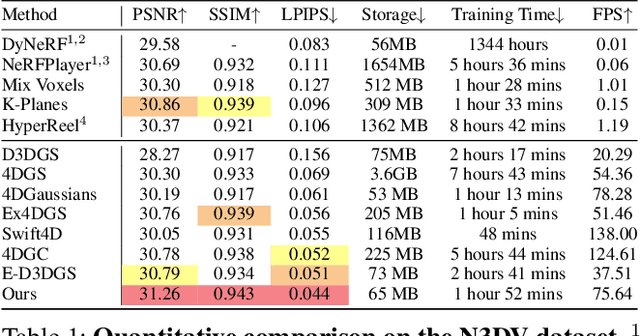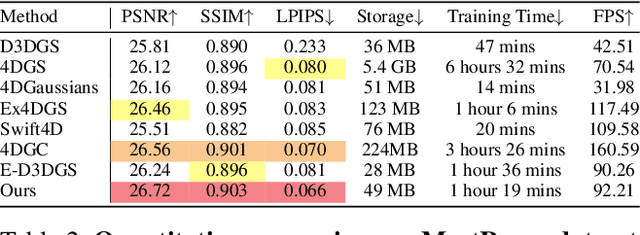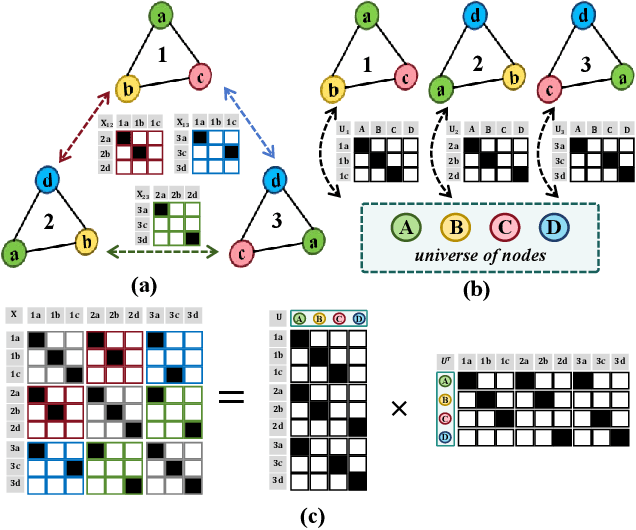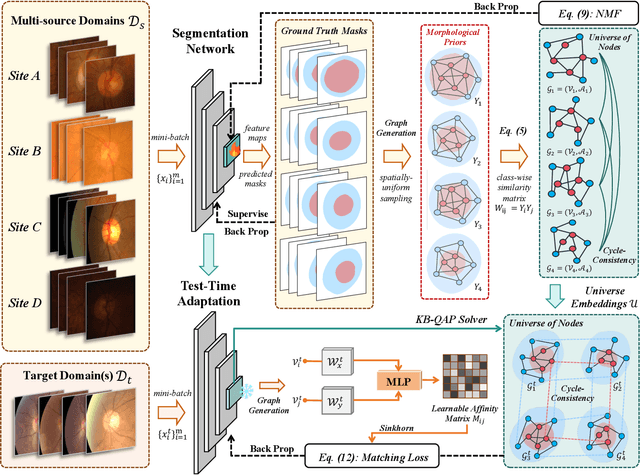Lei Zhao
Soochow University
Online SFT for LLM Reasoning: Surprising Effectiveness of Self-Tuning without Rewards
Oct 21, 2025Abstract:We present a simple, self-help online supervised finetuning (OSFT) paradigm for LLM reasoning. In this paradigm, the model generates its own responses and is immediately finetuned on this self-generated data. OSFT is a highly efficient training strategy for LLM reasoning, as it is reward-free and uses just one rollout by default. Experiment results show that OSFT achieves downstream performance on challenging mathematical reasoning tasks comparable to strong reinforcement learning with verifiable rewards (RLVR) methods such as GRPO. Our ablation study further demonstrates the efficiency and robustness of OSFT. The major mechanism of OSFT lies in facilitating the model's own existing preference (latent knowledge) learned from pretraining, which leads to reasoning ability improvement. We believe that OSFT offers an efficient and promising alternative to more complex, reward-based training paradigms. Our code is available at https://github.com/ElementQi/OnlineSFT.
SparkUI-Parser: Enhancing GUI Perception with Robust Grounding and Parsing
Sep 05, 2025Abstract:The existing Multimodal Large Language Models (MLLMs) for GUI perception have made great progress. However, the following challenges still exist in prior methods: 1) They model discrete coordinates based on text autoregressive mechanism, which results in lower grounding accuracy and slower inference speed. 2) They can only locate predefined sets of elements and are not capable of parsing the entire interface, which hampers the broad application and support for downstream tasks. To address the above issues, we propose SparkUI-Parser, a novel end-to-end framework where higher localization precision and fine-grained parsing capability of the entire interface are simultaneously achieved. Specifically, instead of using probability-based discrete modeling, we perform continuous modeling of coordinates based on a pre-trained Multimodal Large Language Model (MLLM) with an additional token router and coordinate decoder. This effectively mitigates the limitations inherent in the discrete output characteristics and the token-by-token generation process of MLLMs, consequently boosting both the accuracy and the inference speed. To further enhance robustness, a rejection mechanism based on a modified Hungarian matching algorithm is introduced, which empowers the model to identify and reject non-existent elements, thereby reducing false positives. Moreover, we present ScreenParse, a rigorously constructed benchmark to systematically assess structural perception capabilities of GUI models across diverse scenarios. Extensive experiments demonstrate that our approach consistently outperforms SOTA methods on ScreenSpot, ScreenSpot-v2, CAGUI-Grounding and ScreenParse benchmarks. The resources are available at https://github.com/antgroup/SparkUI-Parser.
MAPo : Motion-Aware Partitioning of Deformable 3D Gaussian Splatting for High-Fidelity Dynamic Scene Reconstruction
Aug 27, 2025



Abstract:3D Gaussian Splatting, known for enabling high-quality static scene reconstruction with fast rendering, is increasingly being applied to dynamic scene reconstruction. A common strategy involves learning a deformation field to model the temporal changes of a canonical set of 3D Gaussians. However, these deformation-based methods often produce blurred renderings and lose fine motion details in highly dynamic regions due to the inherent limitations of a single, unified model in representing diverse motion patterns. To address these challenges, we introduce Motion-Aware Partitioning of Deformable 3D Gaussian Splatting (MAPo), a novel framework for high-fidelity dynamic scene reconstruction. Its core is a dynamic score-based partitioning strategy that distinguishes between high- and low-dynamic 3D Gaussians. For high-dynamic 3D Gaussians, we recursively partition them temporally and duplicate their deformation networks for each new temporal segment, enabling specialized modeling to capture intricate motion details. Concurrently, low-dynamic 3DGs are treated as static to reduce computational costs. However, this temporal partitioning strategy for high-dynamic 3DGs can introduce visual discontinuities across frames at the partition boundaries. To address this, we introduce a cross-frame consistency loss, which not only ensures visual continuity but also further enhances rendering quality. Extensive experiments demonstrate that MAPo achieves superior rendering quality compared to baselines while maintaining comparable computational costs, particularly in regions with complex or rapid motions.
Scene-Agnostic Traversability Labeling and Estimation via a Multimodal Self-supervised Framework
Aug 25, 2025Abstract:Traversability estimation is critical for enabling robots to navigate across diverse terrains and environments. While recent self-supervised learning methods achieve promising results, they often fail to capture the characteristics of non-traversable regions. Moreover, most prior works concentrate on a single modality, overlooking the complementary strengths offered by integrating heterogeneous sensory modalities for more robust traversability estimation. To address these limitations, we propose a multimodal self-supervised framework for traversability labeling and estimation. First, our annotation pipeline integrates footprint, LiDAR, and camera data as prompts for a vision foundation model, generating traversability labels that account for both semantic and geometric cues. Then, leveraging these labels, we train a dual-stream network that jointly learns from different modalities in a decoupled manner, enhancing its capacity to recognize diverse traversability patterns. In addition, we incorporate sparse LiDAR-based supervision to mitigate the noise introduced by pseudo labels. Finally, extensive experiments conducted across urban, off-road, and campus environments demonstrate the effectiveness of our approach. The proposed automatic labeling method consistently achieves around 88% IoU across diverse datasets. Compared to existing self-supervised state-of-the-art methods, our multimodal traversability estimation network yields consistently higher IoU, improving by 1.6-3.5% on all evaluated datasets.
An AI-native experimental laboratory for autonomous biomolecular engineering
Jul 03, 2025Abstract:Autonomous scientific research, capable of independently conducting complex experiments and serving non-specialists, represents a long-held aspiration. Achieving it requires a fundamental paradigm shift driven by artificial intelligence (AI). While autonomous experimental systems are emerging, they remain confined to areas featuring singular objectives and well-defined, simple experimental workflows, such as chemical synthesis and catalysis. We present an AI-native autonomous laboratory, targeting highly complex scientific experiments for applications like autonomous biomolecular engineering. This system autonomously manages instrumentation, formulates experiment-specific procedures and optimization heuristics, and concurrently serves multiple user requests. Founded on a co-design philosophy of models, experiments, and instruments, the platform supports the co-evolution of AI models and the automation system. This establishes an end-to-end, multi-user autonomous laboratory that handles complex, multi-objective experiments across diverse instrumentation. Our autonomous laboratory supports fundamental nucleic acid functions-including synthesis, transcription, amplification, and sequencing. It also enables applications in fields such as disease diagnostics, drug development, and information storage. Without human intervention, it autonomously optimizes experimental performance to match state-of-the-art results achieved by human scientists. In multi-user scenarios, the platform significantly improves instrument utilization and experimental efficiency. This platform paves the way for advanced biomaterials research to overcome dependencies on experts and resource barriers, establishing a blueprint for science-as-a-service at scale.
MagicTryOn: Harnessing Diffusion Transformer for Garment-Preserving Video Virtual Try-on
May 28, 2025Abstract:Video Virtual Try-On (VVT) aims to simulate the natural appearance of garments across consecutive video frames, capturing their dynamic variations and interactions with human body motion. However, current VVT methods still face challenges in terms of spatiotemporal consistency and garment content preservation. First, they use diffusion models based on the U-Net, which are limited in their expressive capability and struggle to reconstruct complex details. Second, they adopt a separative modeling approach for spatial and temporal attention, which hinders the effective capture of structural relationships and dynamic consistency across frames. Third, their expression of garment details remains insufficient, affecting the realism and stability of the overall synthesized results, especially during human motion. To address the above challenges, we propose MagicTryOn, a video virtual try-on framework built upon the large-scale video diffusion Transformer. We replace the U-Net architecture with a diffusion Transformer and combine full self-attention to jointly model the spatiotemporal consistency of videos. We design a coarse-to-fine garment preservation strategy. The coarse strategy integrates garment tokens during the embedding stage, while the fine strategy incorporates multiple garment-based conditions, such as semantics, textures, and contour lines during the denoising stage. Moreover, we introduce a mask-aware loss to further optimize garment region fidelity. Extensive experiments on both image and video try-on datasets demonstrate that our method outperforms existing SOTA methods in comprehensive evaluations and generalizes to in-the-wild scenarios.
SPAST: Arbitrary Style Transfer with Style Priors via Pre-trained Large-scale Model
May 13, 2025Abstract:Given an arbitrary content and style image, arbitrary style transfer aims to render a new stylized image which preserves the content image's structure and possesses the style image's style. Existing arbitrary style transfer methods are based on either small models or pre-trained large-scale models. The small model-based methods fail to generate high-quality stylized images, bringing artifacts and disharmonious patterns. The pre-trained large-scale model-based methods can generate high-quality stylized images but struggle to preserve the content structure and cost long inference time. To this end, we propose a new framework, called SPAST, to generate high-quality stylized images with less inference time. Specifically, we design a novel Local-global Window Size Stylization Module (LGWSSM)tofuse style features into content features. Besides, we introduce a novel style prior loss, which can dig out the style priors from a pre-trained large-scale model into the SPAST and motivate the SPAST to generate high-quality stylized images with short inference time.We conduct abundant experiments to verify that our proposed method can generate high-quality stylized images and less inference time compared with the SOTA arbitrary style transfer methods.
Zero-Shot Document-Level Biomedical Relation Extraction via Scenario-based Prompt Design in Two-Stage with LLM
May 02, 2025Abstract:With the advent of artificial intelligence (AI), many researchers are attempting to extract structured information from document-level biomedical literature by fine-tuning large language models (LLMs). However, they face significant challenges such as the need for expensive hardware, like high-performance GPUs and the high labor costs associated with annotating training datasets, especially in biomedical realm. Recent research on LLMs, such as GPT-4 and Llama3, has shown promising performance in zero-shot settings, inspiring us to explore a novel approach to achieve the same results from unannotated full documents using general LLMs with lower hardware and labor costs. Our approach combines two major stages: named entity recognition (NER) and relation extraction (RE). NER identifies chemical, disease and gene entities from the document with synonym and hypernym extraction using an LLM with a crafted prompt. RE extracts relations between entities based on predefined relation schemas and prompts. To enhance the effectiveness of prompt, we propose a five-part template structure and a scenario-based prompt design principles, along with evaluation method to systematically assess the prompts. Finally, we evaluated our approach against fine-tuning and pre-trained models on two biomedical datasets: ChemDisGene and CDR. The experimental results indicate that our proposed method can achieve comparable accuracy levels to fine-tuning and pre-trained models but with reduced human and hardware expenses.
Lightweight LiDAR-Camera 3D Dynamic Object Detection and Multi-Class Trajectory Prediction
Apr 18, 2025Abstract:Service mobile robots are often required to avoid dynamic objects while performing their tasks, but they usually have only limited computational resources. So we present a lightweight multi-modal framework for 3D object detection and trajectory prediction. Our system synergistically integrates LiDAR and camera inputs to achieve real-time perception of pedestrians, vehicles, and riders in 3D space. The framework proposes two novel modules: 1) a Cross-Modal Deformable Transformer (CMDT) for object detection with high accuracy and acceptable amount of computation, and 2) a Reference Trajectory-based Multi-Class Transformer (RTMCT) for efficient and diverse trajectory prediction of mult-class objects with flexible trajectory lengths. Evaluations on the CODa benchmark demonstrate superior performance over existing methods across detection (+2.03% in mAP) and trajectory prediction (-0.408m in minADE5 of pedestrians) metrics. Remarkably, the system exhibits exceptional deployability - when implemented on a wheelchair robot with an entry-level NVIDIA 3060 GPU, it achieves real-time inference at 13.2 fps. To facilitate reproducibility and practical deployment, we release the related code of the method at https://github.com/TossherO/3D_Perception and its ROS inference version at https://github.com/TossherO/ros_packages.
Test-Time Domain Generalization via Universe Learning: A Multi-Graph Matching Approach for Medical Image Segmentation
Mar 17, 2025



Abstract:Despite domain generalization (DG) has significantly addressed the performance degradation of pre-trained models caused by domain shifts, it often falls short in real-world deployment. Test-time adaptation (TTA), which adjusts a learned model using unlabeled test data, presents a promising solution. However, most existing TTA methods struggle to deliver strong performance in medical image segmentation, primarily because they overlook the crucial prior knowledge inherent to medical images. To address this challenge, we incorporate morphological information and propose a framework based on multi-graph matching. Specifically, we introduce learnable universe embeddings that integrate morphological priors during multi-source training, along with novel unsupervised test-time paradigms for domain adaptation. This approach guarantees cycle-consistency in multi-matching while enabling the model to more effectively capture the invariant priors of unseen data, significantly mitigating the effects of domain shifts. Extensive experiments demonstrate that our method outperforms other state-of-the-art approaches on two medical image segmentation benchmarks for both multi-source and single-source domain generalization tasks. The source code is available at https://github.com/Yore0/TTDG-MGM.
 Add to Chrome
Add to Chrome Add to Firefox
Add to Firefox Add to Edge
Add to Edge